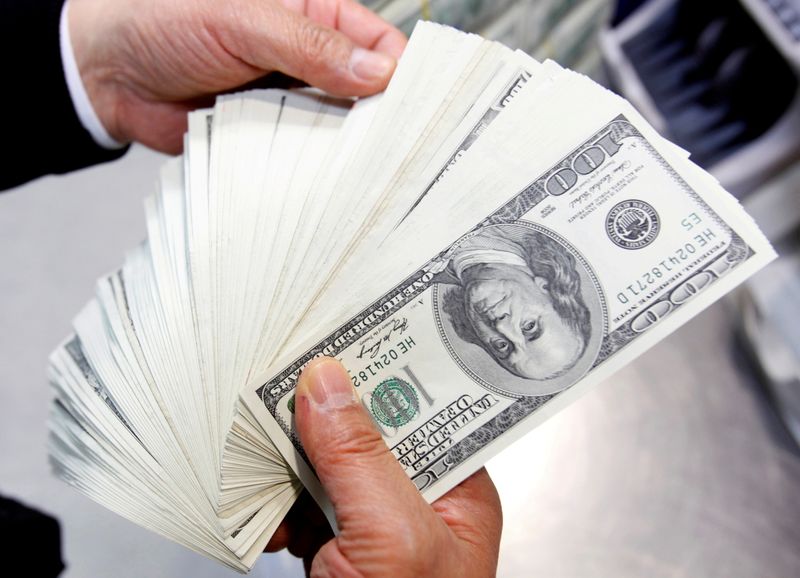
© Reuters. FILE PHOTO: An employee of the Korea Exchange Bank counts one hundred U.S. dollar notes during a photo opportunity at the bank’s headquarters in Seoul April 28, 2010. REUTERS/Jo Yong-Hak
By Hari Kishan
BENGALURU (Reuters) – Interest rate differentials will dominate sentiment in forex markets over the next three months, a Reuters poll of FX analysts found, placing the U.S. dollar in a unique position to extend its outperformance against its peers.
The , up nearly 7% for the year and on its best run since 2015, received further impetus from Federal Reserve Chair Jerome Powell on Wednesday, who gave markets fodder to speculate the central bank would raise rates earlier than expected.
With that policy impetus in its sails, the dollar is likely to find new converts in coming weeks from among those analysts who still expect it to weaken in the short- to medium-term.
“The dollar is well placed to repeat what it tends to do,” said Paul Meggyesi, head of FX research at JP Morgan in London.
“Typically, on average, the dollar has gone up by four percentage points in broad index terms in the six months before the first Fed hike, and that’s probably not an unreasonable projection for thinking about how much upside there could be for the dollar this time around.”
Reuters poll graphic on major currency market outlook: https://fingfx.thomsonreuters.com/gfx/polling/zgvomnmxlvd/Major%20FX%20poll.png
But there was considerable uncertainty in financial markets over the new Omicron coronavirus variant that has pushed measures of volatility to levels not seen since the beginning of the year.
That split analysts polled Nov. 29-Dec. 2 on an additional question asking what would drive FX markets in the coming three months.
The most common reply, from 19 of 46 respondents, was interest rate differentials, the second most common pick was 15 for new coronavirus variants.
While nine chose safe-haven buying, two said search for higher yield, only one analyst picked commodity prices.
Even beyond that period analysts do not expect most major currencies to claw back the significant losses they have suffered against the dollar within 12 months.
The euro was forecast to gain about 1.5% and the safe-haven Japanese yen to drop another 2% in a year. They were down around 7% and 9% this year respectively. At the beginning of 2021, analysts had forecast both currencies to be about 10% higher from current levels around now.
However, some analysts held to the view the dollar would eventually weaken as underlying factors supporting the greenback’s strength were unsustainable in the long run.
“If what you’re looking at is inflation, you have to keep at the back of your mind that you’re sort of looking at the near term, it can be a year, year and a half but ultimately there’s a point at which they’ve done enough and then you hit a period of dollar weakness,” said Steve Englander, head of G10 FX strategy at Standard Chartered (OTC:).
“I’d say this is not a high quality dollar rally. It’s not like the late 90s when you saw productivity booming. This is sort of the 70s rally which we know comes and goes.”
Fusion Media or anyone involved with Fusion Media will not accept any liability for loss or damage as a result of reliance on the information including data, quotes, charts and buy/sell signals contained within this website. Please be fully informed regarding the risks and costs associated with trading the financial markets, it is one of the riskiest investment forms possible.
Stay connected with us on social media platform for instant update click here to join our Twitter, & Facebook
We are now on Telegram. Click here to join our channel (@TechiUpdate) and stay updated with the latest Technology headlines.
For all the latest Business News Click Here
For the latest news and updates, follow us on Google News.
